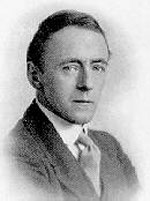
Welcome to Hyperion Records, an independent British classical label devoted to presenting high-quality recordings of music of all styles and from all periods from the twelfth century to the twenty-first.
Hyperion offers both CDs, and downloads in a number of formats. The site is also available in several languages.
Please use the dropdown buttons to set your preferred options, or use the checkbox to accept the defaults.

The Irish influence is only one of many found in Bax's music. An early affinity with Norway and the literature of Bjørnstjerne Bjørnson brought themes and moods from the Nordic countries into his music. From 1905 to 1911, Bax constantly alternated between using Nordic and Celtic themes in his compositions. He even attempted to teach himself some Norwegian and, in the song The Flute (1907) for voice and piano, he successfully set an original poem by Bjørnson to music. Later examples of Bax’s Nordic affinity include Hardanger for two pianos (1927) and the orchestral tone-poem The Tale the Pine-Trees Knew (1931).
In 1910, a youthful fling with a Ukrainian girl, Natalia Skarginska, brought Bax to St Petersburg, Moscow and Lubny, near Kiev, which led to a fascination for Russian and Slavonic themes. The relationship with Skarginska resulted in an emotional agony from which he never completely recovered. His conflicting feelings are perhaps reflected in the First Piano Sonata in F sharp (1910, revised 1917-20). The Russian and Ukrainian influence can also be heard in two works for solo piano from 1912, Nocturne–May Night in the Ukraine and Gopak (Russian dance).
In 1915 appeared In a Vodka Shop also for solo piano. In 1919, Bax was one of four British composers to be commissioned to write orchestral music to serve as interludes at Sergei Diaghilev’s Ballets Russes in London. For the commission, he incorporated the three above-mentioned piano works of Russian themes into Russian Suite for orchestra. In 1920, he wrote incidental music to J. M. Barrie’s whimsical play The Truth About the Russian Dancers, his last work based on a clearly Russian theme. The Russian influence may be found in many of Bax's other scores and is especially predominant in his first three symphonies.




